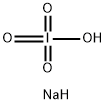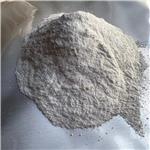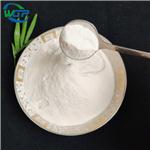Sodium periodate is an inorganic salt, composed of a sodium cation and the periodate anion. It may also be regarded as the sodium salt of periodic acid. Like many periodates it can exist in two different forms: sodium metaperiodate, which has the formula NaIO4, and sodium orthoperiodate, normally this means sodium hydrogen periodate (Na2H3IO6) but the fully reacted sodium orthoperiodate salt, Na5IO6, can also be prepared. Both salts are useful oxidising agents.
Sodium periodate Na2H3IO6, is formed by reaction of sodium iodate plus sodium hydroxide plus chlorine (sodium chloride also formed), and the periodate separates as crystals from the medium. In solution, it is stated, periodate gradually forms ozone and iodate at the ordinary temperatures.
Sodium metaperiodate is used as an oxidizing reagent involved in the oxidation of cellulose. It is involved in the cleavage of vicinal diols to prepare two aldehydes. This oxidation is commonly used in selectively label RNA, saccharides and other compounds with vicinal diols.
Oxidimetric standard; determination of manganese.
Sodium Periodate is the sodium salt of periodic acid used to oxidize cellulose. Sodium Periodate oxidation is often used to selectively label RNA, saccharides and other compounds with vicinal diols.
ChEBI: An inorganic sodium salt having periodate as the counterion.
Sodium periodate (sodium (meta)periodate) supported on silica gel is a solid supported reagent. It may be synthesized by adding silica gel to hot aqueous solution of sodium metaperiodate and evaporating to dryness followed by vigorous swirling and shaking.
Fire risk in contact with organic materials.
Toxic by ingestion.
Flammability and Explosibility
Non flammable
Recrystallise it from hot water. [Willard Inorg Synth I 170 1939, Bernays Inorg Synth II 212 1946.]



